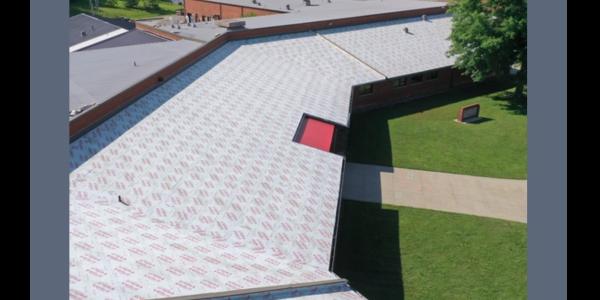The right temperature makes all the difference

By KARNAK.
Ambient temperature can impact the durability, quality and effectiveness of roofing work. Consult the experts for application best practices, and don’t be caught off guard by changing weather conditions.
For many industries, discussing the weather and fluctuating temperatures provides small talk around the water cooler as employees ease into their workday. But for the roofing industry, discussing the weather can mean the difference between a durable, effective roofing system and unnecessary time and labor costs in application and repairs. As a manufacturer and supplier of reflective coatings, cement and sealants for roofing and waterproofing, KARNAK understands the crucial role temperature plays in roofing. Understanding how it affects different roofing materials on flat roofs and improves the overall success and longevity of your roofing projects is critical.
Application temperature in various roofing materials
1 - Adhesives and sealants
Commercial roofing projects often involve the use of adhesives and sealants to secure various components and ensure waterproofing. The application temperature of these materials is crucial to achieving a strong and reliable bond. Low temperatures can inhibit the curing process, leading to a weaker bond and potential water infiltration. Conversely, high temperatures can cause the adhesive or sealant to cure too quickly, preventing proper adhesion and compromising the integrity of the roofing system. Following the manufacturer's temperature guidelines and choosing products specifically formulated for the prevailing conditions are vital for successful bonding. Furthermore, temperature can affect the viscosity of the product in the can at the time of application. Too hot, the material will be too thin. Too cold, it may be too stiff to spread.
When ordering your products (KARNAK or otherwise) be aware that most manufacturers make different grades for different seasons (in our case, we have Summer, Semi and Winter grade roofing cements). While the final product will perform the same as all other grades (if you are using, for example, Winter-grade during the cold months), the ambient surrounding temperature should match the product's grade.
2 - Modified bitumen
Modified bitumen roofing systems provide excellent durability and weather resistance, making them popular for commercial and residential flat roofs. The proper application of modified bitumen membranes is highly dependent on temperature. Cold temperatures can make the material stiff and challenging to handle, resulting in difficulties during installation. Additionally, inadequate heat during torching can lead to poor adhesion and an ineffective waterproofing barrier. Conversely, excessive heat can cause the material to become too soft, leading to improper bonding and potential slippage. Maintaining the recommended temperature range is crucial for ensuring a successful modified bitumen roofing installation.
3 - Metal roofing
Metal roofing is known for its longevity, durability and aesthetic appeal. During installation, the temperature can impact the expansion and contraction of metal panels. In cold weather, metal panels may contract, making them more difficult to install and potentially causing gaps between the panels. In contrast, high temperatures can cause metal to expand, which may lead to buckling or warping if proper allowances are not made during installation. Understanding the anticipated temperature fluctuations and accounting for them in the installation process is essential for achieving a structurally sound and visually appealing metal roof.
Conclusion
Considering the application temperature is a critical aspect of any roofing project. Whether you are using adhesives and sealants, applying modified bitumen membranes, or working with metal roofing, understanding the impact of temperature on these materials is key to achieving a successful and long-lasting roof. By following manufacturer guidelines, utilizing appropriate techniques and accounting for weather conditions, roofing professionals can ensure that the materials perform optimally and provide the desired protection and durability for years to come. Remember, when it comes to roofing work, the right temperature can make all the difference.
Original article source: KARNAK
Learn more about KARNAK Reflective Coatings, Sealants and Cements in their Coffee Shop Directory or visit www.karnakcorp.com.






















Comments
Leave a Reply
Have an account? Login to leave a comment!
Sign In